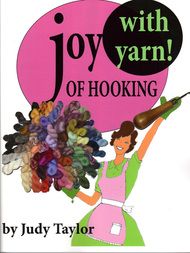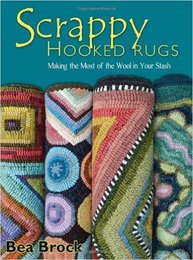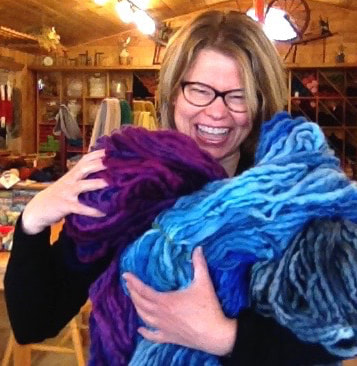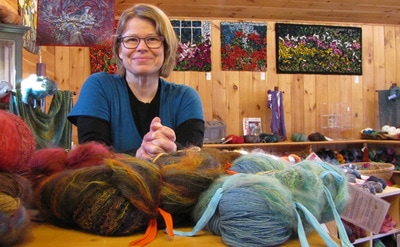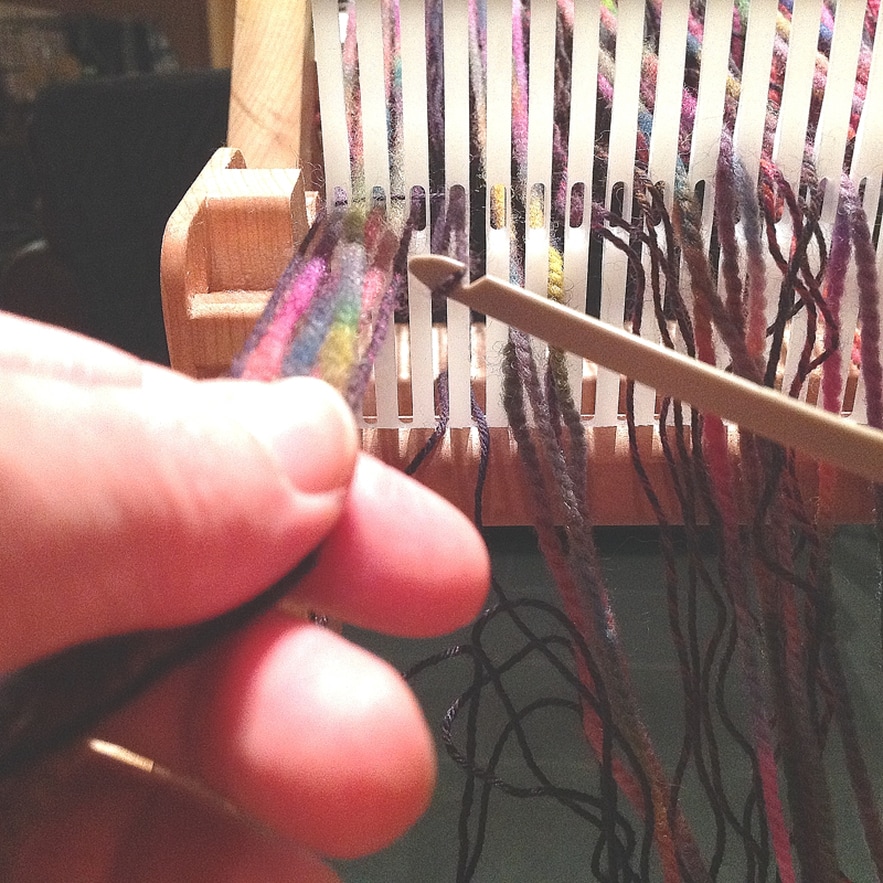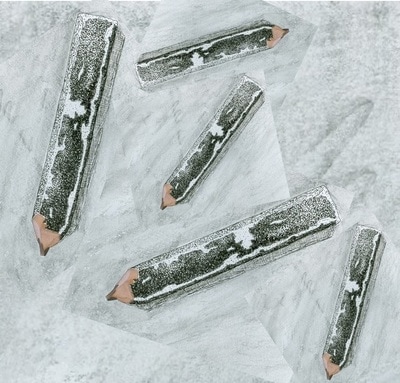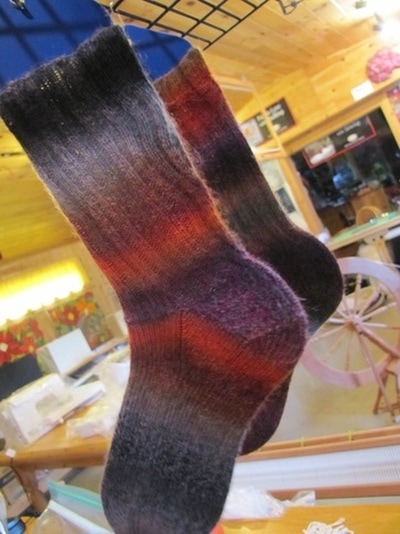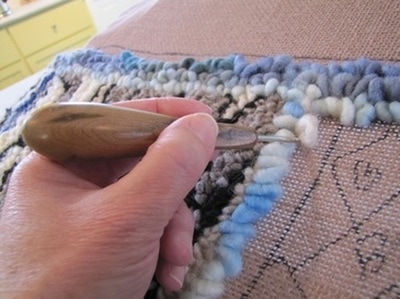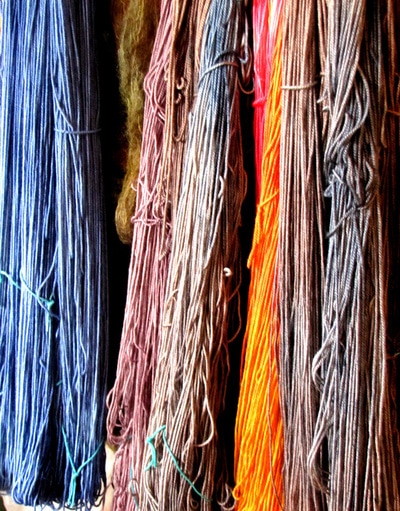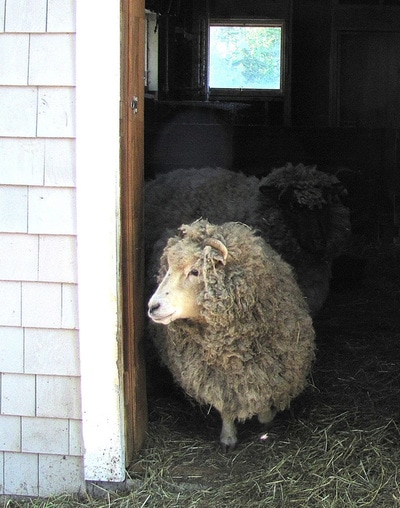|
I often have customers who ask about how to get started in rug hooking. It's a great question. Newcomers to rug hooking are faced with navigating a myriad of different hooks, hoops, frames, backings and then need to decide which materials to actually HOOK with. In all of this rug hooking can become financially daunting. It doesn't take long to start ringing up a $400.00 frame, a stack of hand dyed artisanal wool fabrics, a custom carved hook, and a week's worth of designer rug hooking lessons. Whoa, let's rewind. Are you starting to think that maybe this rug hooking thing might not be your cup of tea after all?
Let me tell you, in my opinion, what you REALLY need to get started in rug hooking. You need to really WANT to do it. At the heart of rug hooking were primarily women who used any and all materials at hand to produce decorative mats and hangings that would cover draughty cracks in floors and walls. To start rug hooking I would suggest, above all, a good quality backing. This is literally the foundation of your work. A poor quality, loosely woven backing that splits, doesn't hold your loops and makes you snuffle and sneeze the entire time that you're working with it just doesn't spell FUN. My backing of choice is a premium linen with a good sturdy structure. On to frames. I'm not going to lie. I hook rugs using a high end Snap Dragon frame which is an absolutely stellar piece of equipment. You can hook on a snapdragon too but you certainly don't need to start with one. I started rug hooking on a simple hoop and I still use a hoop on many occasions. The hugely talented Rug Hooking artist Rachel Leblanc uses no frame at all. You'll need a hook or a punch to make rugs. This can be be a very simple tool. Your collection of hooks can be developed over time if you feel the need. I use two hooks faithfully. One has a fine shank and a rather small tip while the other has a wide, primitive shank with a larger tip. The materials that you actually hook with can be many and varied. Wool fabric can be recycled or taken from a crisp new bolt of cloth. You can also hook using yarn, cotton strips paper and plastic. Your creativity is the true currency of rug hooking. Regardless of your finances, time, and level of interest I would suggest that before you engage in rug hooking classes purchase a good book and try it on your own. This way, if you do decide to take a workshop you'll surely have some great questions to bring to class and most importantly you'll be bringing your own personal style. Happy hooking! You really don't need to break the bank. Here are some great books to get you started ...
10 Comments
Great article! I love rug hooking. Only been at it for a couple of months. I started with Latch Hooking, which I still love - now into rug punch and hooking. It's refreshing to see what others in this group of Artisans are doing. Hope to meet some o
2/26/2016 11:23:54 am
Reply
Linda
2/26/2016 11:51:35 am
Thank you so much for saying this. After 8 years I just bought a moderate priced frame and I'm perfectly happy with a very old Rigby cutter passed to me from a great teacher at a very cheap price. I often read things on Facebook and other groups where a new hooker ask these questions. It dismays me to read people responding that only a $800 cutter or $500 frame will produce quality work. It's like suggesting that if your going to sew then only a Pfaff or Bernina will do. Believe me I made very expensive wedding gowns on an old machine.
Reply
Cindy
2/26/2016 01:13:41 pm
Thank you for those encouraging words. I've just finished my first little rug. I bought a little kit a few years ago on a trip to Newfoundland. I started it on a hoop and then put it away for awhile because it hurt my wrist to hold and hook. But I picked it up again after Christmas and loved working on it, now I can wait to start another one.
Reply
Pauline Peever
2/26/2016 02:08:43 pm
Yes, equipment and supplies can be expensive. Many beautiful rugs have been accomplished on a shoestring it all comes down to the individual.
Reply
My first frame was 4 pieces of boards held with clamps much like a quilt frame. It rested on the backs of 2 chairs and and an adjustable iron board. It had holes drilled on two of the side boards to tie the sides of the backing taut and the ends were tacked down with thumb tacts. The rug could be rolled as I worked on.
Reply
elaine allerton
2/26/2016 04:48:15 pm
Great blog,,,,, I also started off with a $6.00 hook and hoop,,,, burlap and recycled clothes,,,, have a stand now that my friends husband made ,,, use linen mostly and still love recycled ,, but do use yarn now too,,,,
Reply
Ruth reenstra
2/27/2016 09:19:11 am
Love all the advice. You will find lots of people willing to share or sell used equipment. Find a local helper or group. Hooking is very social. Ideas and friends
Reply
pat
2/29/2016 11:40:59 am
I am so happy to see you write about this subject. I have so many friends who would like to learn to hook but are turned off by the cost. But not for the cost of the hooks and hoops because there are alternatives, but the wool! In our area you just can't find wool clothing to recycle. The shops that are selling wool have surpassed $40/yd and some are over $60/yd. I respect the amount of time that does into making all that beautiful wool, but as an industry it would be nice if there were other more economical options. It's becoming a hobby for the elite.
Reply
Sandra
2/29/2016 05:34:30 pm
The Rug Hookers Bible can be borrowed from your local library. It is an excellent resource for those learning the craft. There are also inexpensive material options such as tee shirts, pantyhose, wool yarn as well as recycled wool fabric. Read anything you can find on the subject.
Reply
12/10/2021 03:27:00 am
Great article Heidi. I started hooking on a basic lap frame in 1985 - all it did was tilt. I used it until about 2010, when I finally bought a floor frame for easier demonstration at craft shows, just before I went “professional” and joined the Saskatchewan Crafts Council. I also started by hand cutting cotton and double knit strips of fabric. Then graduated to recycled wool. Today I still have some of that wool in my pieces, along with new wool that I dye myself. There are many ways to do rug hooking and many price points into the craft.
Reply
Your comment will be posted after it is approved.
Leave a Reply. |
WELCOME
Everyday I try to find a little something that makes life interesting. A good book, a wagging dog, a cool breeze, tea with a friend. Here are my field notes about making, discovering, and enjoying a simple, slow, handmade life. Thanks so much for visiting. I appreciate your spending time with me. xo Heidi 
STITCHER, MAKER, DREAMER, BOOK REVIEWS summer 2016 Archives
July 2020
|


